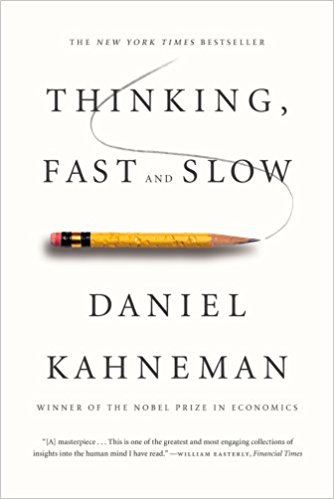
 If it takes 5 machines 5 minutes to make 5 parts, how many minutes does it take 100 machines to make 100 parts?
If it takes 5 machines 5 minutes to make 5 parts, how many minutes does it take 100 machines to make 100 parts?
For most of us, the instinctual response to this question is ‘100 minutes’ – but our instincts are wrong. The answer is actually 5 minutes. This problem demonstrates the two systems of thinking discussed by Daniel Kahneman in his 2011 book Thinking Fast and Slow.
According to Kahneman, System 1 operates automatically and quickly, based on memories and emotional reactions, while System 2 allows for slower, more complex analysis of logic and probability. So in this case, System 1 leads us to assume ‘100 minutes’ is the correct answer before System 2 had an opportunity to overrule an initial impulse with logical reasoning.
System 2 thinking requires considerably more effort. While it is entirely possible for our brains to process multiple simple things at once, processing effortful activities at once is near impossible. As Kahneman quips, ‘You could not complete the product of 17 x 24 while making a left turn into dense traffic, and you certainly should not try.’
System 2 can be lazy. Most of the time we rely on System 1, and only when conflict occurs or System 1 runs into difficulty does System 2 fully activate. As the 100 machines problem demonstrates, System 1 has limitations and biases and is prone to making errors. To overcome these errors, it is necessary to engage System 2 and pay attention.
Posted by: Niki Lomax
